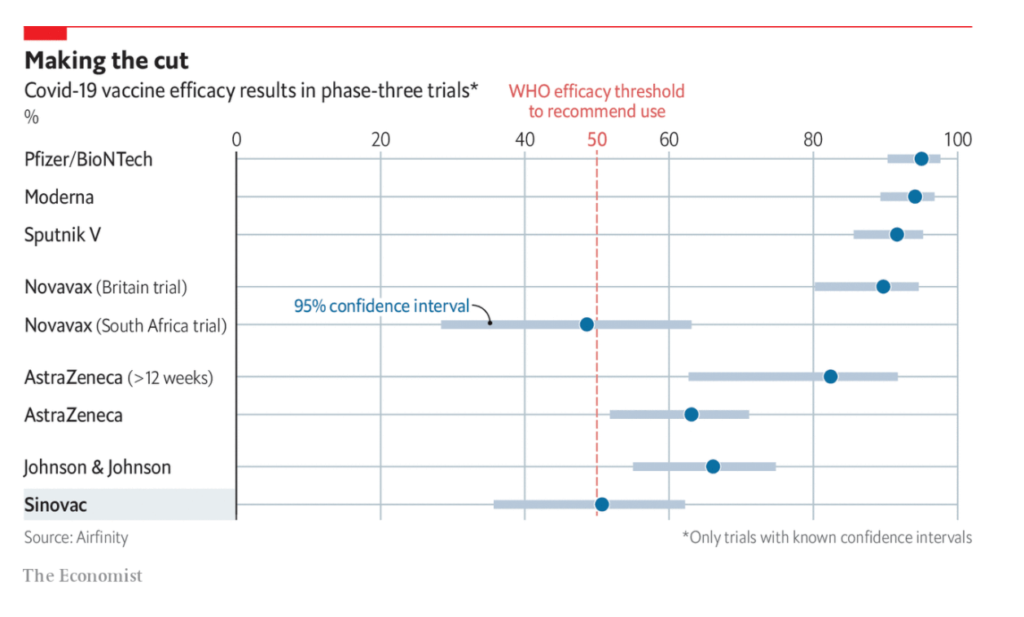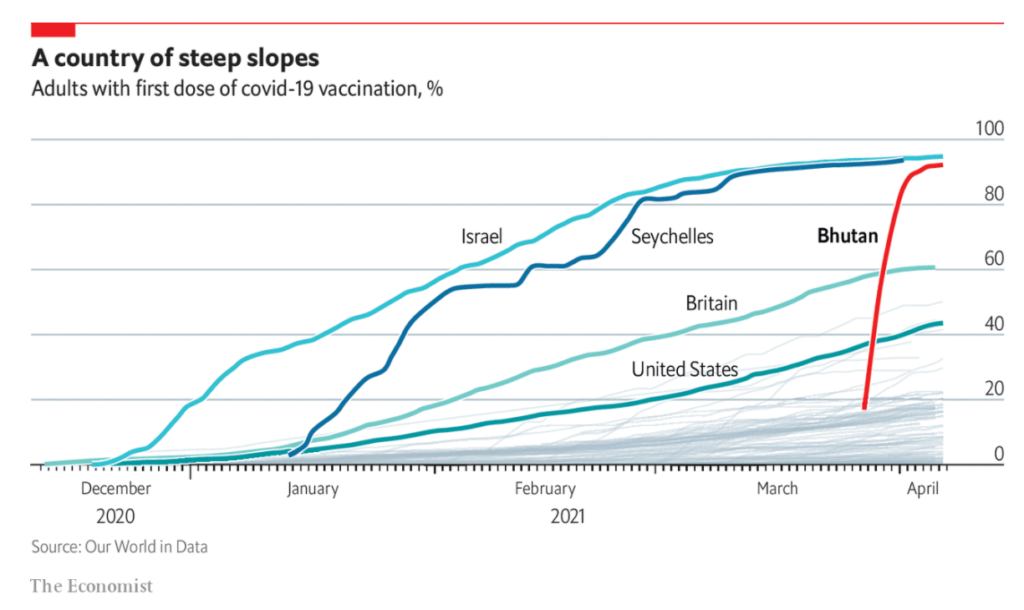Graphic:

Excerpt:
AT A PRESS conference at the White House on June 22nd Anthony Fauci, the director of America’s National Institute of Allergy and Infectious Diseases, issued a warning. The delta variant of the SARS-CoV-2 virus, first identified in India in February, was spreading in America—and quickly. “The delta variant is currently the greatest threat in the US to our attempt to eliminate covid-19,” declared Dr Fauci. Boris Johnson, Britain’s prime minister, issued a similar warning a week earlier. To contain the rapid spread of the variant, European countries and Hong Kong have tightened controls on travellers from Britain.
According to GISAID, a data-sharing initiative for corona- and influenza-virus sequences, the delta variant has been identified in 78 countries (see chart). The mutation is thought to be perhaps two or three times more transmissible than the original virus first spotted in Wuhan in China in 2019. It is rapidly gaining dominance over others. According to GISAID’s latest four-week average, it represents more than 85% of sequenced viruses in Bangladesh, Britain, India, Indonesia and Russia. It may soon be the most prevalent strain in America, France, Germany, Italy, Mexico, South Africa, Spain and Sweden. (GISAID does not, in its summary data, distinguish between delta, B.1.617.2, and the “delta plus” mutation, AY.1, AY.2.)
Publication Date: 29 June 2021
Publication Site: The Economist








